
The Episcopal Diocese of Washington is a diocese of the Episcopal Church covering Washington, D.C., and nearby counties of Maryland in the United States. With a membership of over 38,000, the diocese is led by the Bishop of Washington, Mariann Budde. It is home to Washington National Cathedral, which is the seat of both the diocesan bishop and the Presiding Bishop of the Episcopal Church.
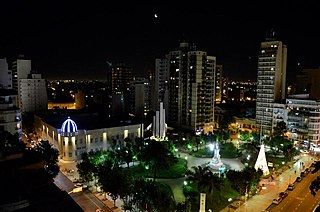
Avellaneda is a port city in the province of Buenos Aires, Argentina, and the seat of the Avellaneda Partido, whose population was 342,677 as per the 2010 census [INDEC]. Avellaneda is located within the Greater Buenos Aires metropolitan area, and is connected to neighboring Buenos Aires by several bridges over the Riachuelo River.
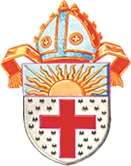
The Diocese of Qu'Appelle in the Anglican Church of Canada lies in the southern third of the civil province of Saskatchewan and contains within its geographical boundaries some 50 per cent of the province's population of one million.

English Argentines are citizens of Argentina or the children of Argentine citizens brought up in Argentina, who can claim ancestry originating in England. The English settlement in Argentina, took place in the period after Argentina's independence from Spain through the 19th century. Unlike many other waves of immigration to Argentina, English immigrants were not usually leaving England because of poverty or persecution, but went to Argentina as industrialists and major landowners.
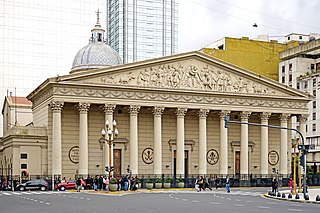
The Buenos Aires Metropolitan Cathedral, officially called Buenos Aires Metropolitan Cathedral of the Holy Trinity, is the main Catholic church in Buenos Aires, Argentina.

The Anglican Church of South America is the ecclesiastical province of the Anglican Communion that covers six dioceses in the countries of Argentina, Bolivia, Paraguay, Peru, and Uruguay.
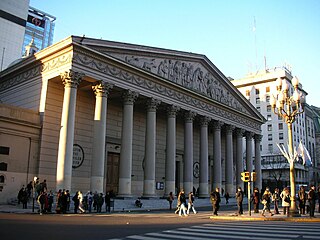
The Metropolitan Archdiocese of Buenos Aires is a Latin Church ecclesiastical territory or archdiocese of the Catholic Church in Argentina. It is a metropolitan archdiocese with 13 suffragan sees in the country, including two Eastern Catholic eparchies.

The Diocese of Connor is in the Province of Armagh of the Church of Ireland.

The Diocese of Argentina is a diocese in the Anglican Communion within the Anglican Church of South America.

Cementerio Británico de Buenos Aires, also known in English as Buenos Aires British cemetery, is a cemetery in Buenos Aires, Argentina. It is in the district of Chacarita in the northern part of Buenos Aires, adjacent to La Chacarita Cemetery.

The Parish of the Falkland Islands is an extra-provincial church in the Anglican Communion. In 1869, the "Diocese of the Falkland Isles" with jurisdiction over the rest of South America except for British Guiana was established. The name was due to a legal technicality: at that time there was no way an English bishop could be consecrated for areas outside the jurisdiction of the Crown. From the start, the bishop resided in Buenos Aires and had his administrative office there. From 1902 to 1973, the jurisdiction of the diocese was progressively reduced in area as more dioceses were established in South America and after the formation of the "Consejo Anglicano Sudamericano" in 1973 as a step towards the formation of a new province of the Anglican Communion the Parish became extra-provincial under the direct jurisdiction of the Archbishop of Canterbury. Until the war between Britain and Argentina in 1982, at the Archbishop's request episcopal functions were performed by the Anglican Bishop of Argentina.
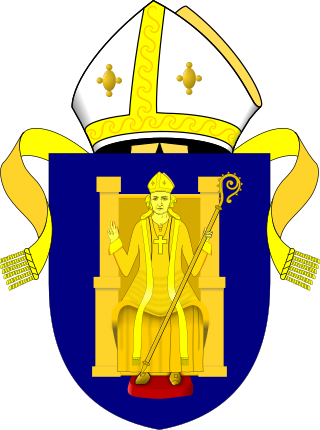
The Diocese of Clogher is a diocese of the Church of Ireland in the north of Ireland. It is in the ecclesiastical province of Armagh. It covers a rural area on the border between Northern Ireland and the Republic of Ireland including much of south west Ulster, taking in most of the counties Fermanagh and Monaghan and parts of counties Cavan, Leitrim and Donegal.
There are many landmarks in Buenos Aires, Argentina, some of which are of considerable historical or artistic interest.
Russian Argentines are people from Russia living in Argentina, and their Argentine-born descendants. The estimates of the number of Argentines of Russian descent vary between 170,000 and 350,000. They are mostly living in Buenos Aires and Greater Buenos Aires.

The British Cemetery of Montevideo is one of the oldest operating cemeteries in Uruguay.
Daniel Ivor Evans CBE was an Anglican bishop in South America in the mid 20th century.
Edward Francis Every was an Anglican priest and author: a Missionary Bishop, in South America for a 35-year period during the first half of the twentieth century.

The Serbian Orthodox Church in North and South America is a constituent and integral part of the one and only Serbian Orthodox Church (Patriarchate) and therefore the jurisdiction of the Serbian Orthodox Church (SPC) in the Americas. It has five eparchies (dioceses), that were reorganized in 2009. It also has a central church council made up of diocesan bishops, and almost 220 churches, chapels, monasteries and sketes in the United States, Canada, and South and Central America.
William Alfred Franklin was a British Anglican bishop who served as Bishop of Colombia and as full-time Assistant Bishop of Peterborough.
Brian Roger Williams is an Argentine Anglican bishop. Since 2020, he has been diocesan bishop of the Diocese of Argentina in the Anglican Church of South America.
















